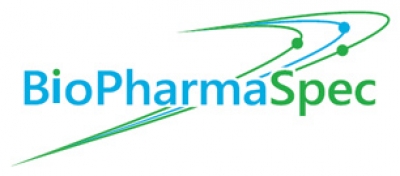Biophysical and Physicochemical Techniques for Comprehensive Characterization of Aggregation Profiles and Secondary and Tertiary Structure
Changes to the higher order structure of your biopharmaceutical can have detrimental effects on the safety, stability, function and immunogenicity of the product. In the development of a biosimilar, it is a regulatory requirement to conduct a comparative higher order structure study with the innovator in order to demonstrate biosimilarity. Assessing higher order structure throughout product development will help ensure that any process changes (e.g. to the media, pH, purification, or formulation) have not negatively impacted the aggregation profile or the secondary and tertiary structure of the product.
This webinar will detail the key analytical techniques used to assess the higher order structure of biopharmaceuticals and therefore define potential Critical Quality Attributes (CQAs).
Case studies from representative antibody products will include example data from:
- Circular Dichroism (CD)
- Fourier Transform Infrared Spectroscopy (FT-IR)
- Fluorescence
- Nuclear Magnetic Resonance (NMR)
- Sedimentation Velocity Analytical UltraCentrifugation (SV-AUC)
- Size Exclusion Chromatography- Multi-Angle Light Scattering (SEC-MALS)
Using the information presented in this webinar, you can plan comprehensive and regulatory compliant higher order structure characterization strategies to support formulation and process development, biosimilar comparability and stability studies for your biopharmaceutical.
Register for this webinar now and join BioPharmaSpec experts, as we share our experiences and expertise in the biophysical and physicochemical characterization of proteins.
Presented by

Dr Mark Millichip,
Technical Director – Physicochemical Analysis
Mark obtained his PhD in protein characterization using a variety of techniques, from Bristol University. He subsequently spent several years as a postdoctoral research scientist working in different research areas in the field of protein purification and characterization, with emphasis on physicochemical and biophysical techniques. The projects he was involved in required detailed analysis of proteins derived from animal, plant and fungal systems, often exhibiting very difficult purification characteristics. He moved to Polymer Labs (now part of Agilent) as a Senior Scientist before working with Shimadzu in their instrument sales team.
Mark joined M-Scan Limited (now part of SGS Life Sciences) in 2005 as a biochemist and became the Biophysical and Physicochemical Technical Manager before moving to Sandoz, as head of GMP analytics for Drug Product Analytics for their Biosimilars program. Mark joined BioPharmaSpec in 2016 as Technical Director for Physicochemical Analysis and is responsible for the management of all aspects of protein characterization relating to protein purification, aggregation and secondary and tertiary structure.

Christopher Ziegenfuss,
Laboratory Manager
Chris is Laboratory Manager of BioPharmaSpec's US site located in Malvern, Pennsylvania. He is a highly experienced Mass Spectroscopist. Chris joined M-Scan Inc. (now part of SGS Life Sciences) in 1997 and gained experience in the advancing field of applications of mass spectrometry to the characterization of biomolecules.
He has analyzed a breadth of biopharmaceuticals, including detailed characterization of peptides, oligonucleotides, proteins, glycoproteins, and carbohydrates, at both the research and GMP levels. He also regularly coordinates and manages large, multi-site projects across a network of laboratories. Chris joined BioPharmaSpec in 2015 to aid in the set-up of BioPharmaSpec's new US lab and now oversees US laboratory operations.





